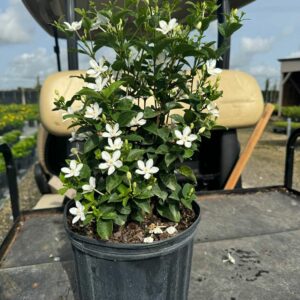Monstera
Monstera deliciosa, also known as the Swiss cheese plant, is a tropical houseplant prized for its large, fenestrated leaves. It thrives in warm, humid climates and prefers bright, indirect light indoors. Keep the soil moist but well-drained, and provide high humidity levels. Monstera can grow several feet tall and wide indoors and even larger outdoors in tropical regions. It’s typically grown indoors but can thrive outdoors in USDA hardiness zones 10-12.
$36.20 – $108.65
Related products
-
All Products
Asian Snow Jasmine
$24.90 This product has multiple variants. The options may be chosen on the product page -
All Products
Bird of Paradise White
$45.27 – $1,131.81 This product has multiple variants. The options may be chosen on the product page
Monstera deliciosa, commonly known as the Swiss cheese plant, is a popular tropical houseplant appreciated for its large, glossy leaves and unique appearance. Here’s a concise summary:
Color: The leaves of Monstera deliciosa are typically dark green and deeply cut, with natural splits and holes that give it the “Swiss cheese” appearance.
Climate: Monstera deliciosa is native to tropical regions of Central America, thriving in warm and humid climates. It’s often grown as a houseplant in temperate regions but can also be cultivated outdoors in tropical and subtropical climates.
Size: Indoors, Monstera deliciosa can grow up to several feet tall and wide, with mature plants developing large, fenestrated leaves. Outdoors in ideal conditions, it can grow even larger.
Care:
Light: Prefers bright, indirect light, although it can tolerate some shade. Direct sunlight should be avoided as it can scorch the leaves.
Watering: Allow the soil to partially dry out between waterings, and ensure good drainage to prevent waterlogging.
Humidity: Appreciates high humidity levels, especially indoors. Regular misting or using a humidifier can help maintain adequate humidity.
Soil: Well-draining potting mix rich in organic matter is ideal.
Temperature: Thrives in temperatures between 65°F to 85°F (18°C to 29°C). Protect from cold drafts and temperatures below 50°F (10°C).
Fertilizing: Feed with a balanced liquid fertilizer every 2-4 weeks during the growing season.
Zone: Monstera deliciosa is typically grown indoors as a houseplant but can be grown outdoors in USDA hardiness zones 10 through 12, where temperatures do not drop below 30°F (-1°C).
Monstera deliciosa is a stunning and low-maintenance plant, perfect for adding a tropical touch to indoor spaces or as a statement plant in gardens in suitable climates.
| Size | 3 Gallon, 7 Gallon |
|---|



